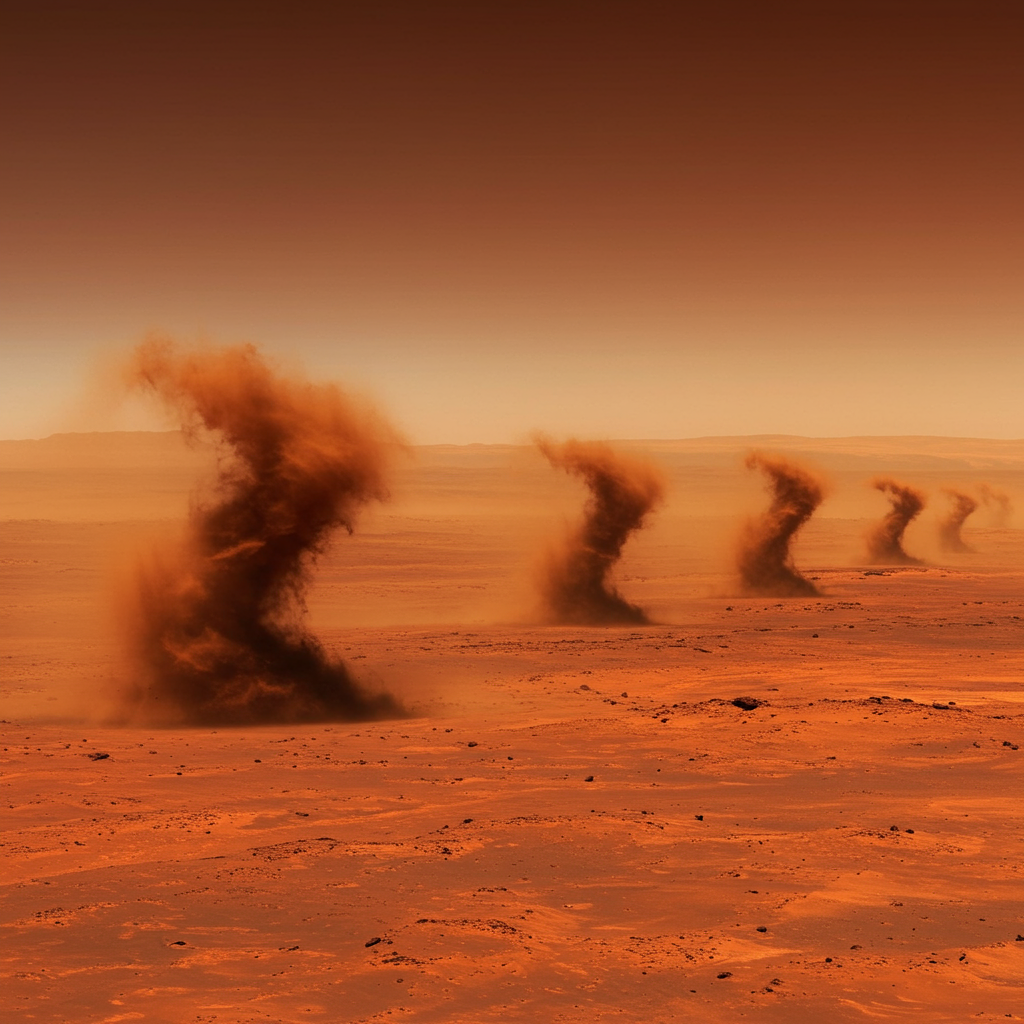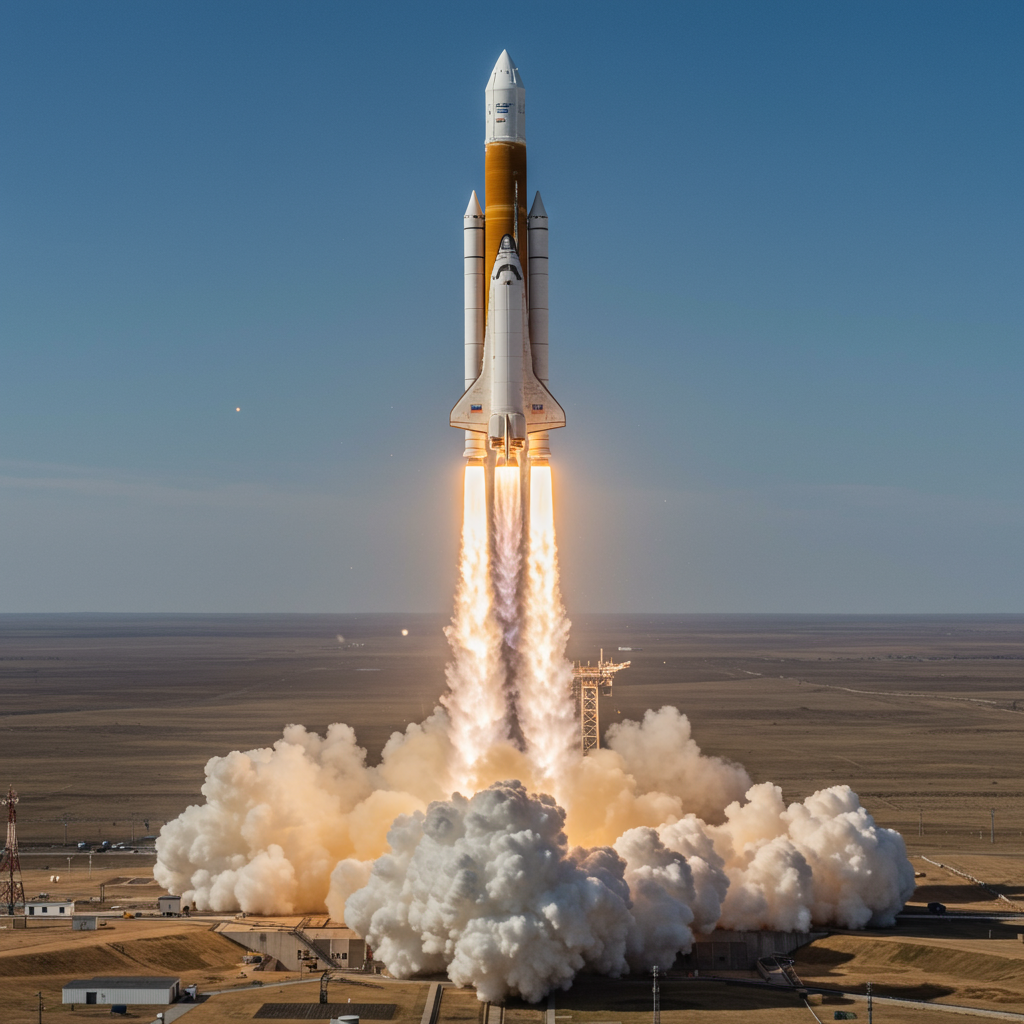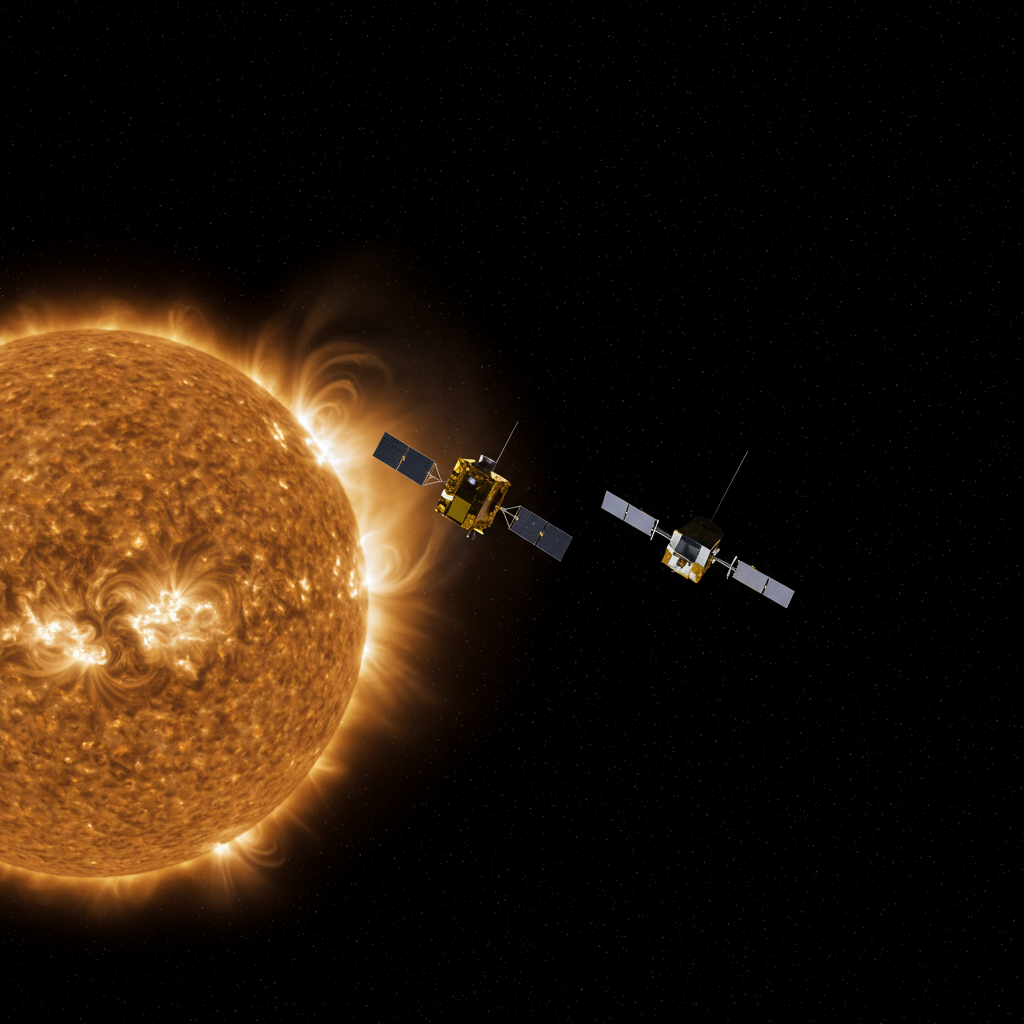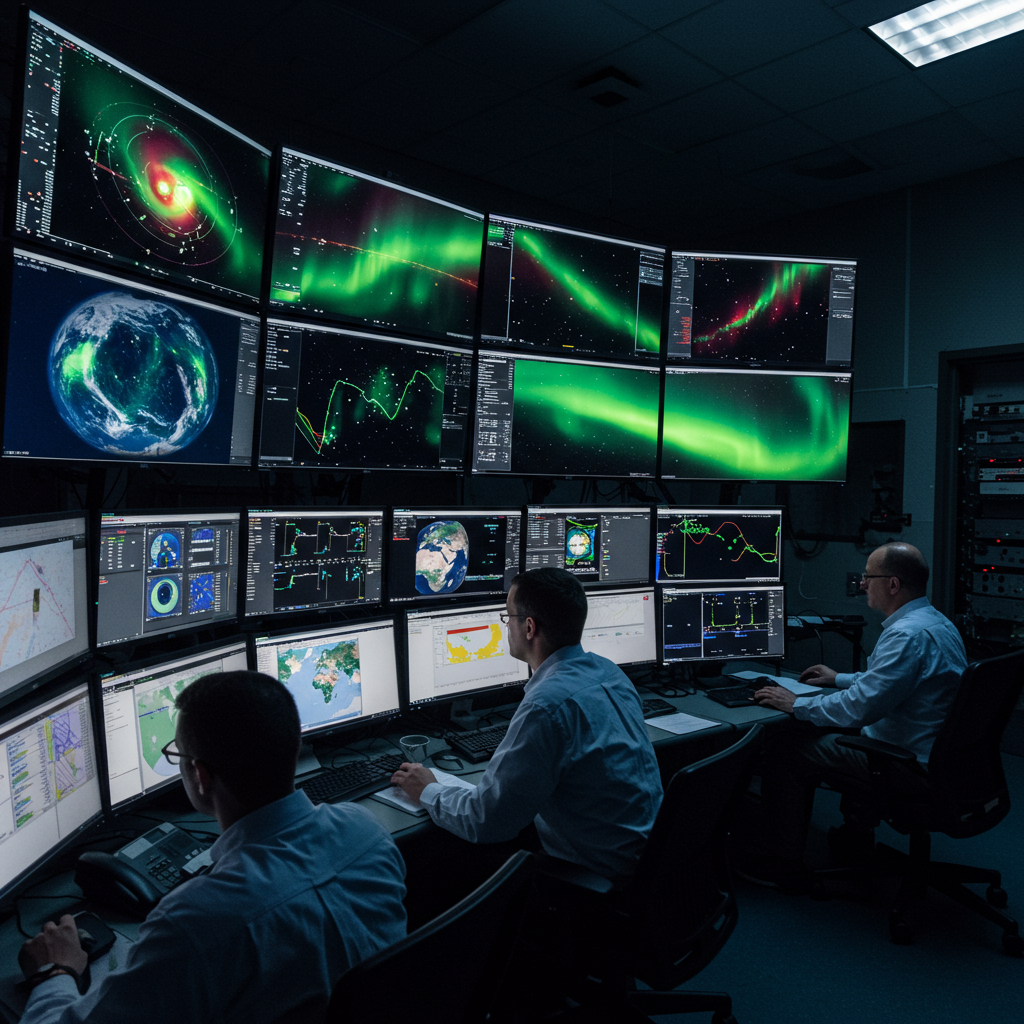The crimson plains of Mars, often imagined as silent and still, are in fact a dynamic canvas of atmospheric activity. Recent groundbreaking research, leveraging two decades of data from the European Space Agency (ESA) Mars Express and ExoMars Trace Gas Orbiter spacecraft, has unveiled astonishing insights into the Red Planet’s atmospheric dynamics. Scientists have meticulously tracked over a thousand Martian dust devils, revealing that surface winds on Mars blow much faster than previously understood. This extensive study, spearheaded by Valentin Bickel from the University of Bern, provides the first-ever global catalog of these tornado-like whirlwinds. Its findings fundamentally reshape our understanding of Mars’s weather and climate, with crucial implications for future space exploration and the safety of robotic and human missions.
Unveiling Mars’s Hidden Winds Through Dust Devils
For decades, we’ve known about Mars dust devils. These towering columns of swirling Martian dust are a common sight across the Red Planet’s desolate landscapes. However, their true significance as indicators of powerful winds has only just been fully appreciated. Scientists combed through a staggering 20 years of imagery, identifying 1,039 individual dust devils. By tracking their precise movements, researchers discovered wind speeds reaching up to 44 meters per second, or a blistering 158 kilometers per hour (nearly 100 miles per hour). This speed is significantly higher than any previously measured by ground-based rovers, challenging long-held assumptions about Mars’s atmospheric energy.
“Dust devils make the normally invisible wind visible,” explains lead author Valentin Bickel. This ingenious perspective allowed his team to map wind patterns across the Martian surface on a global scale. Such an undertaking was previously deemed impossible due to the limited, localized data available from surface missions. The extensive catalog now offers an unprecedented, planet-wide view of how these powerful winds shape Mars. While 158 km/h sounds incredibly fast, it’s worth noting the Martian atmosphere is incredibly thin—about 1% of Earth’s density. Consequently, a human on Mars would barely feel a breeze of that speed, though it’s still potent enough to lift vast quantities of dust.
The Critical Role of Martian Dust in Climate
Why do these swirling columns of dust command such scientific attention? Dust on Mars is far from dull; it’s a pivotal player in the planet’s climate system. Unlike Earth, where rain washes atmospheric dust away relatively quickly, dust on Mars can persist in the atmosphere for extended periods. It can be carried globally by powerful winds, influencing temperatures by shielding the surface from the Sun during the day and acting as a thermal blanket to retain warmth at night. Dust particles also serve as starting points for cloud formation. In extreme cases, massive dust storms can even force water vapor to escape into space, impacting Mars’s precious water cycle.
Therefore, a profound understanding of when, where, and how dust is lifted from the surface into the atmosphere is essential for comprehending Mars’s past, present, and future climate. The newly revealed speed of Mars dust devils suggests that more dust might be lifted into the atmosphere than current models predicted, potentially leading to more frequent or intense dust storms. These findings necessitate a critical re-evaluation of our Martian climate models.
A New Era of Martian Meteorology: The 20-Year Study
To achieve this groundbreaking global perspective, researchers employed advanced artificial intelligence. They trained a neural network to recognize dust devils within the vast archives of images. This system then meticulously combed through pictures taken by Mars Express since 2004 and ExoMars Trace Gas Orbiter (TGO) since 2016. The result is a comprehensive catalog of 1,039 dust devils, a dataset previously unimaginable.
The resulting map of these identified whirlwinds confirms that while Mars dust devils can appear anywhere, including on towering Martian volcanoes, many are clustered in specific “source regions.” For example, numerous dust devils were observed in Amazonis Planitia, a vast area known for its fine layers of dust and sand. The study also highlighted clear seasonal patterns: dust devils are most common during the spring and summer of each Martian hemisphere. They typically last a few minutes and are most prevalent during the daytime, peaking between 11:00 and 14:00 local solar time. This pattern mirrors observations of dust devils in dry, dusty regions on Earth, providing a fascinating planetary parallel.
Decoding Dust Devil Movement: Ingenious Methodology
One of the most innovative aspects of this research is the methodology used to measure the dust devils’ speeds. Neither Mars Express nor ExoMars TGO were originally designed to measure wind speeds directly. The researchers ingeniously repurposed an otherwise “unwanted feature” of the spacecrafts’ imaging processes. Both orbiters create single images by combining views from separate channels. By design, there’s a slight delay—ranging from 1 second to 46 seconds for TGO’s CaSSIS instrument, and 7 to 19 seconds for Mars Express’s nine image channels—between these sequential views.
While this delay poses no issue for static surfaces, it creates subtle “color offsets” in the final image when something is moving. These offsets, previously considered “image noise,” became the precise data points Valentin Bickel’s team sought. By meticulously measuring these tiny shifts in position between the delayed channels, they could accurately quantify the speed and direction of the moving dust devils. For Mars Express, with its multiple channels, the team could even track the dust devil’s wobble and acceleration. This creative use of existing data showcases the power of scientific ingenuity, turning seemingly irrelevant artifacts into valuable scientific measurements.
Protecting Future Martian Missions
The implications of this enhanced understanding of Martian wind patterns are far-reaching, particularly for future space exploration. Accurate information on wind speeds and directions is paramount for planning the safe arrival and operation of landers and rovers on Mars. With this new global dataset, scientists can now refine existing climate models and improve predictions of wind patterns around the Red Planet.
This detailed knowledge can help mission planners assess wind conditions at potential landing sites well in advance. Such foresight is crucial for estimating how much dust might accumulate on a rover’s solar panels, which directly impacts its power generation and operational lifespan. Knowing this can help in scheduling essential self-cleaning maneuvers for robotic assets. For instance, the ExoMars Rosalind Franklin rover, planned for touchdown in 2030, is already incorporating dust information into its mission planning to avoid landing during the planet’s global dust storm season. This research provides essential intelligence, making future missions safer and more effective.
The Power of Open Science: A Public Catalogue
Valentin Bickel emphasizes the collaborative spirit of this research: “This catalogue of dust devil tracks is already public and anybody can use it for their own research.” The database is continuously being updated, as both Mars Express and ExoMars TGO continue to collect new images daily. This commitment to open science fosters further research and innovation within the planetary science community.
Furthermore, now that scientists know where Mars dust devils frequently occur, they can strategically direct orbital imagers to focus on these exact places and times. Even more exciting, missions are being coordinated to image the same dust devils simultaneously. This synchronized observation allows for cross-validation of movement measurements, further enhancing data accuracy. Colin Wilson, ESA project scientist for both missions, succinctly captures the importance: “Dust affects everything on Mars—from local weather conditions to how well we can take images from orbit. It’s difficult to understate the importance of the dust cycle.” This study marks a significant leap in characterizing this fundamental Martian process.
Frequently Asked Questions
How do scientists measure wind speeds on Mars using dust devils?
Scientists ingeniously measure Martian wind speeds by tracking the movement of dust devils in images from orbiters like Mars Express and ExoMars Trace Gas Orbiter. These spacecraft capture images using separate color channels with slight time delays. As a dust devil moves during these delays, it creates a subtle “color offset” in the final image. Researchers precisely quantify these offsets, turning what was once considered “image noise” into valuable data to calculate the dust devil’s speed and direction, effectively revealing the invisible wind.
Which regions on Mars experience the most frequent dust devil activity?
While dust devils can occur across most of Mars, including on its towering volcanoes, the new study confirms specific “source regions” where they are particularly prevalent. A notable hotspot identified is Amazonis Planitia. This vast Martian plain is characterized by a fine layer of dust and sand, providing ample material for these whirlwinds to form. The research also found that dust devils are most common during the spring and summer months in each hemisphere, peaking in activity during the late morning to early afternoon.
How will this new understanding of Martian winds impact future space missions?
This enhanced knowledge of Martian winds is crucial for future space missions, both robotic and potentially human. Accurate wind speed and direction data allows mission planners to make more informed decisions about landing sites, helping to predict atmospheric conditions during descent. More importantly, understanding dust devil activity and wind patterns enables better estimation of dust accumulation on rover solar panels. This can inform self-cleaning schedules and contribute to extended mission lifespans. This research, therefore, directly contributes to the safety, efficiency, and longevity of future exploration efforts on the Red Planet.
Conclusion
The latest research into Mars dust devils offers a captivating glimpse into the Red Planet’s dynamic atmosphere. By transforming years of orbital imagery into a powerful dataset, scientists have not only revealed that Martian surface winds are far stronger than previously thought but have also provided an unprecedented global map of these invisible forces. This fundamental shift in our understanding of Martian meteorology carries profound implications, from refining climate models to enhancing the safety and operational efficiency of future Mars missions. As the public catalogue continues to grow, this groundbreaking work ensures that every new image from Mars brings us closer to truly comprehending the enigmatic world that awaits our exploration.
References
- <a href="https://www.esa.int/ScienceExploration/SpaceScience/MarsExpress/DancingdustdevilstraceragingwindsonMars”>www.esa.int
- www.iflscience.com
- <a href="https://www.esa.int/ESAMultimedia/Images/2025/10/MarsExpressseesadustdevildancingacross_Mars”>www.esa.int
- www.independent.co.uk
- www.aol.com




